As I write I am out on the drilling platform, the drilling crew is working on a repair so the drilling has temporarily been paused. The wind is really picking up so I don't think I will go out for a walk... So now is a good time to tell you about yesterday afternoon. I went out to the rig with the lunch bus because of working the previous night. When I arrived, everyone was really working hard. The transition to the narrow diameter pipe was clearly a good decision, earlier our core recovery percentage was not as good, but all morning, the drillers were achieving a near 100% recovery. This was great news continued on into the afternoon. I was helping cut, measure and catalog the core samples as they came "on-deck". Around five in the evening, we noticed a few strange light colors in the usual dark clay sediments.
On the next shot, (drilling push of three meters) Jerry, the driller noticed a distinctly different type of material. When we extracted the core from the tool, we realized that we no longer had clay sediments but rock! This was the first sign of the impact breccia (angular rock fragments cemented together).
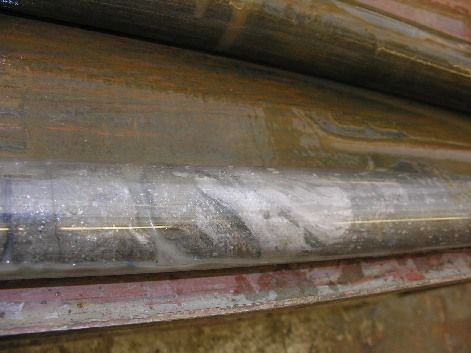 Core sample from the Lake E impact breccia
Core sample from the Lake E impact breccia
The excitement was evident all around the rig! (Particularly since we established a friendly pool/lottery to see who could guess the time and depth of when we would hit rock.)
The exciting news was quickly radioed back to base camp, from there, phone calls and emails started circulating the globe! We are now drilling through the transition zone between the lake environment and the rocks altered by the meteorite impact three and a half million years ago!
While we certainly enjoyed the moment, work did not stop. Julia, from Germany and I continued our work; cutting, capping, measuring and recording the core samples, while others prepared the tools to go back down hole for another run.
Over the next several hours, we continued to drill, extract and measure core samples.
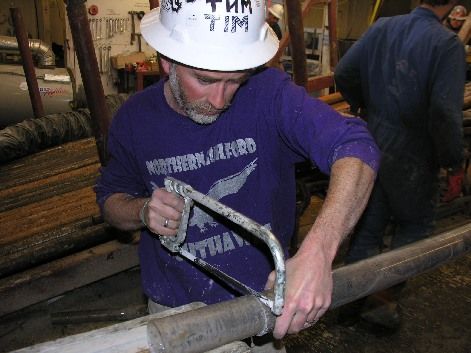 Tim Martin, cutting a core section into one meter segment.
Tim Martin, cutting a core section into one meter segment.
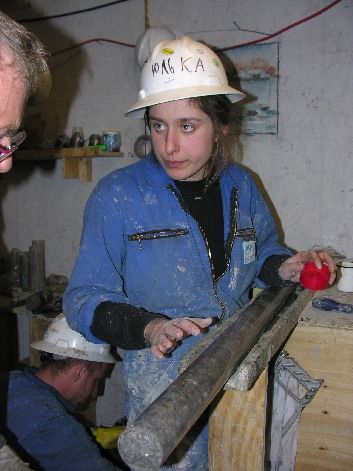 Julia Gottschalk, a German university student prepares to cap a core sample.
Julia Gottschalk, a German university student prepares to cap a core sample.
As we extracted more breccia, I was amazed by the beautiful colors and varying composition of the rock.
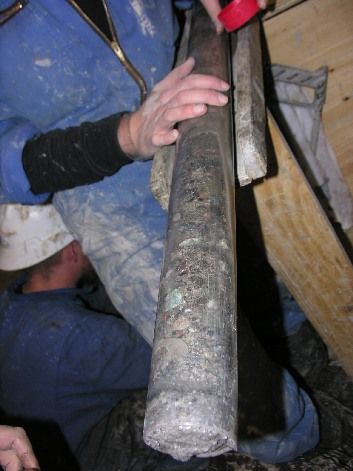 Colorful impact breccia from lake El'gygytgyn.
Colorful impact breccia from lake El'gygytgyn.
When the crew shift bus came at eight in the evening, there was more than just the night crew. Julie Brigham-Grette and several others who had been working in the office came out with the shift change. Crew change took a little longer as scientific discussions and observations were shared by all.
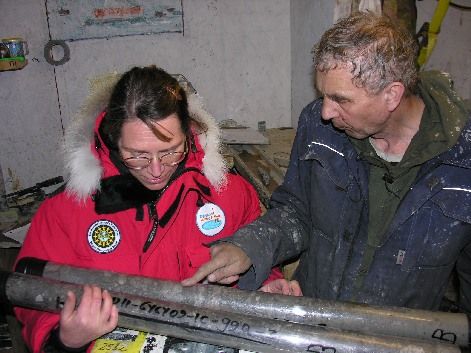 Principle Investigators (lead scientists) Julie Brigham Grette and Pavel Minyuk discuss the latest discovery.
Principle Investigators (lead scientists) Julie Brigham Grette and Pavel Minyuk discuss the latest discovery.
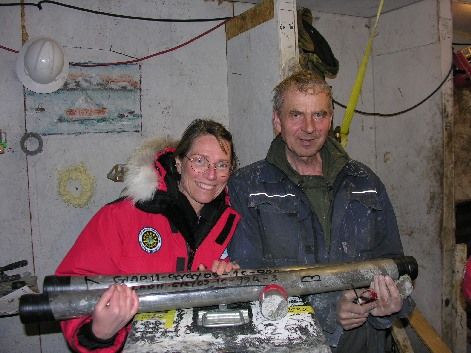 Julie and Pavel share the excitment of reaching a goal that took over 10 years to accomplish.
Julie and Pavel share the excitment of reaching a goal that took over 10 years to accomplish.
I have often thought over the last several weeks how fortunate I am to have been selected for this expedition. After all everyone went through to get here, particularly the scientists who have been working on this project for over a decade, it was so exciting to participate in this discovery! But even more, that an Earth Science Teacher from North Carolina, was working with a German university student and we were the ones to handle and log these important cores was such an honor and privilege!
Julie, thank-you for inviting me to join you on this amazing adventure!
Oh, by the way... with all the scientists and drillers around... guess who won the pool?
Julia, the university student guessed the closest date and time... missing only by nine minutes! And for the depth? After drilling through over 320 meters of sediment, 170 meters below the lake ice, the winner was off by only 2 meters!...It was that Earth Science teacher from NC!

